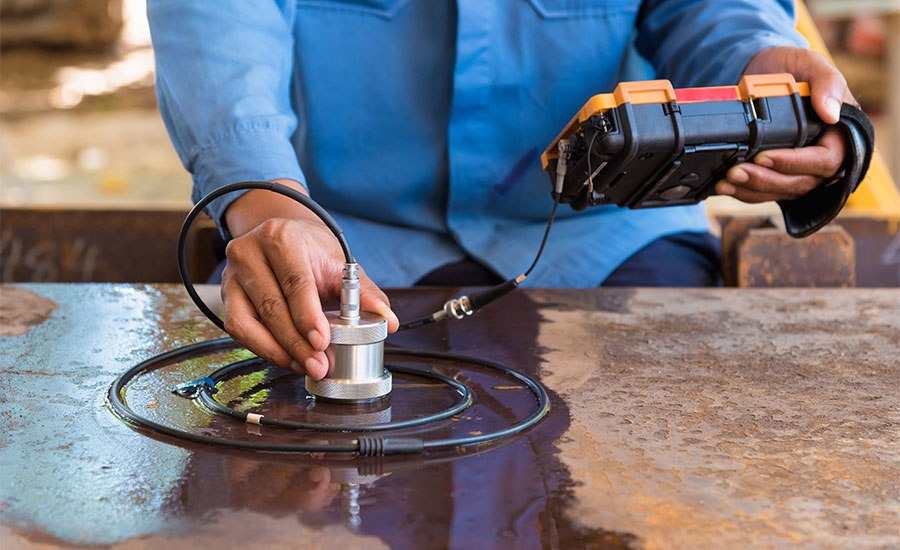RFT - Remote Field Testing uses a low frequency signal which allows electromagnetic energy to penetrate the tube walls so that external and internal flaws can be detected with approximately the same sensitivity. There are essentially two travel paths of the magnetic field between the transmitter and the receiver coils. Magnetic field that has travelled inside the tube is one of the planes wherein the field is attenuated by circumferential eddy currents in the tube wall. The other field path which initiates at the transmitter coil traverses radially outward through the wall then spreads axially along the tube and re-enters back through the pipe wall to reach the receiver coil. On the outer field, magnetic field distributes swiftly with less attenuation. The through-transmission allows external and internal defects to be detected with equal sensitivity.
Whenever there is a tube wall thinning, the electromagnetic field arrives with better amplitude (due to less attenuation) but delayed (phase delay) to the detector coil. Discontinuities anywhere in the travel path cause changes in the magnitude and phase of the received signal. Using the Voltage plane graphs and the strip chart, phase delay and the amplitude of the signal is used to detect and size metal loss precisely. Using Voltage plane graphs, defects can be measured for its depth and volume. LMATS uses Eddyfi’s software Magnifi for signal analysis and reporting.

 Aptest
Aptest


